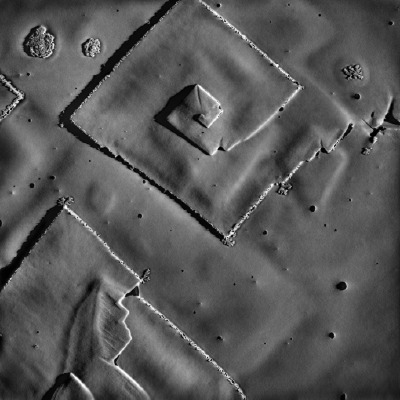Having spent 9 hours in aeroplanes yesterday (not to mention another 6 hours hanging about in a snowy Philadelphia airport waiting for a delayed connection) I have at least had a chance to catch up with some reading. This included two nano- books, one of which was David Berube‘s “Nanohype“. The other (which exemplifies the phenomenon of Berube’s title) was “The Dance of Molecules: how nanotechnology is changing our lives
“, by Ted Sargent. I’m reviewing Sargent’s book for Nature, so I’ll save my views on it for later.
“Nanohype” isn’t exactly the usual airport book, though. It’s a rather dense, and extremely closely referenced, account of the way nanotechnology moved from being a staple of futurists and science fiction writers to being the new new thing for technophilic politicians and businessmen, and a new object of opposition for environmentalists and anti-globalisers. For those of us fascinated by the minutiae of how the National Nanotechnology Initiative got going, and of the ways the Nanobusiness Alliance influenced public policy in the USA, it’s going to be the essential source.
The book’s title makes Berube’s basic position pretty clear. Almost everyone involved has some ulterior motive for overstating how revolutionary nanotechnology is going to be, how much money it’s going to make, or the scale of the apocalypse it is going to lead to. Scientists need grants, companies need venture capital, campaigning organisations need publicity and the donations that follow. Not everyone is a huckster, but those that remain idealists end up so divorced from reality that they end up attracting Berube’s (no doubt unwelcome) sympathy. Sometimes the search for low motives leads from bracing cynicism to the brink of absurdity, such as his suggestion that anti-globalisation activist Zak Goldsmith’s opposition to genetic modification of food derives from his wife’s business interests in organic food. This seems a little unlikely, given Goldsmith’s reported £300 million inherited fortune. But Berube’s refusal to take things at face value is a refreshing starting point.
The book has a competent and fairly complete overview of those commercial applications ascribed to nanotechnology, but one thing this book is not about is science. I think this is a pity – there’s an interesting story to be told both about the ascendance of the nanotechnology label amongst academic scientists, and of the resistance, suspicion and cynicism that this has bred in some quarters. But this will have to wait for another chronicler; curiously even giants of academic nanoscience, like Rick Smalley and George Whitesides, appear here as antagonists for the Drexler vision rather than for their own considerable achievements.
Of course, this is a book about politics, not science. It’s about the high-level politics around science funding, the politics of the financial markets, the politics of the campaigning organisation. But despite this political theme, it’s curiously light on ideologies. When we are talking about the societal and ethical implications of nanotechnology, we’re talking about competing visions of the future, competing ideologies. It is striking that many of the protagonists in the nanotechnology debates are driven by very strongly held, and sometimes far from mainstream, creeds. There’s the millenarianism of the transhumanists, the characteristically American libertarianism exemplified by blogger and nano-enthusiast Glenn Reynolds, and on the opposition side the strange blend of radical anti-capitalism, green politics and reactionary conservatism that underlies the world-view of Zak Goldsmith (particularly interesting in the UK now that a newly resurgent conservative opposition party has charged Goldsmith with reviewing its environmental policies). I would like to see a much closer analysis of the deeper reasons why nanotechnology seems to be emerging as a focus of these more profound arguments, but perhaps it’s still too early for this.

